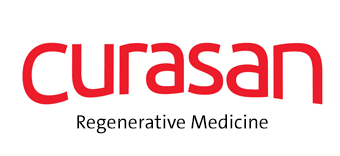 Bone grafting procedures are essential for patients receiving implants and are used to replace the edentulous area of missing bone caused by a missing tooth. The subsequent grafting holds onto the implants more appropriately, allowing for the patient to have a high success rate without the risk of implant failure. When it concerns a dental implant bone graft, there are several options readily available to both surgeons and their patients. Some of these options include xenograft tissue, autograft tissue, or allograft tissue. Synthetic options, known as alloplasts are a viable choice for patients wanting a clean and effective option. Xenograft and allograft (animal and human-derived) options carry the risk of contamination, while autograft tissue (patient-derived) is difficult and invasive to obtain.
Bone grafting procedures are essential for patients receiving implants and are used to replace the edentulous area of missing bone caused by a missing tooth. The subsequent grafting holds onto the implants more appropriately, allowing for the patient to have a high success rate without the risk of implant failure. When it concerns a dental implant bone graft, there are several options readily available to both surgeons and their patients. Some of these options include xenograft tissue, autograft tissue, or allograft tissue. Synthetic options, known as alloplasts are a viable choice for patients wanting a clean and effective option. Xenograft and allograft (animal and human-derived) options carry the risk of contamination, while autograft tissue (patient-derived) is difficult and invasive to obtain.
Why Patients May Prefer Synthetic Options
Synthetic grafting materials are made using man-made materials and can be coupled with bone growth factors. They are generally safe to use and have a high success rate for use in implant procedures. In fact, synthetics are often used in surgical procedures ranging from medical to dental care, so they are incredibly popular and highly beneficial for surgeons in all fields. Because they are not human-derived, your patients will consider spending more money on this option simply because there is little to no risk of contamination. Many patients are unsure of using animal and cadaver tissue due to the risk of contamination. While synthetic products may be more expensive in some cases, most patients will pay a small addition to have a product free from human or animal material.
Another key benefit to utilizing synthetics in bone grafting is that it is readily available. Both animal and human tissue can be difficult to obtain, making surgical procedures lengthy and problematic. Synthetic options are available whenever they are needed, so patients can begin the implant procedures required for their dental health without waiting weeks or months to obtain healthy tissue.
Increased Revenue Due to Higher Costs
Synthetic bone costs more to produce to ensure a consistent and pure product compared to animal or human-derived tissues. What this means for your practice is most patients are willing to pay a slight increase for synthetics to alleviate human or animal material. Most patients will choose synthetic over other forms of dental bone grafting materials. As a surgeon, you can appreciate the increase in revenue per patient while also using a material that has well-documented success rates and provides patient satisfaction.
Benefits of Choosing Synthetics for Bone Grafting Procedures
Dental bone grafting is essential for a variety of different procedures, but is most often used for dental implants within the field of dentistry. Many patients who would otherwise be viable candidates for implants do not have the proper amount of bone structure to have the implant placed. If implants are still placed without a bone graft being done, the implant could fail and will need to be removed quickly.By utilizing synthetic bone grafting materials this enables the implant to have bone to adhere and grow into, causing the implant to work well for the prosthetics placed on top of it. Understanding the benefits of this dental bone grafting material will help you to determine if it is the right option for your practice.
• No risk of disease contamination
• Increased revenue for your practice
• High success rate
• Easily attainable and available
• Easy to use in surgeries
• Has the ability to heal minor defects on its own
• Tailored resorption profiles available depending on the surgical need
Stats Concerning Bone Grafting Using Synthetics
The increase in elements found within the synthetic material had the ability to create higher bone mineral density as well as enhance overall osteoblast proliferation. This increases the likelihood of the bone graft successfully taking to the existing anatomy, thus creating a structured area for the implants that need to be placed. Many dental surgeons are finding that synthetic options heal faster than either animal or human-derived and are more easily accepted by the body. This makes for a much more beneficial choice for surgeons looking for bone graft materials that they can trust to use for each and every procedure.
Another study conducted by the International Journal of Oral and Maxillofacial Implants suggested that the use of synthetics in implant procedures was equivalent to autograft materials where the tissue has been taken from the patient where it will be used. This is highly beneficial to the patient as it means they can get the same benefits from obtaining bone tissue from their own body without the invasive procedure involved to get it. It also means less work for the surgeon because they only need to focus on two procedures: the bone graft and the dental implants. There is no need for an additional surgery where bone tissue is harvested specifically for future bone grafting use.
Choosing the Proper Synthetics for Your Practice
There are a range of synthetic dental implant bone graft materials readily available and it is important to find the options that are right for you. You should take both costs and effectiveness into consideration when choosing to utilize synthetics in your practice. The increase in revenue and the ability to offer a less invasive material is crucial in properly placing implants and working with a satisfied patient.
When it concerns regenerative medicine, it is important to have the right bone grafting materials for your practice. This not only improves the outcome of your surgeries, but ensures higher revenue and decreased practice costs. You will also experience a happier and more satisfied patient because their implant was a success and they did not have to worry about choosing between animal or human-derived tissue.
